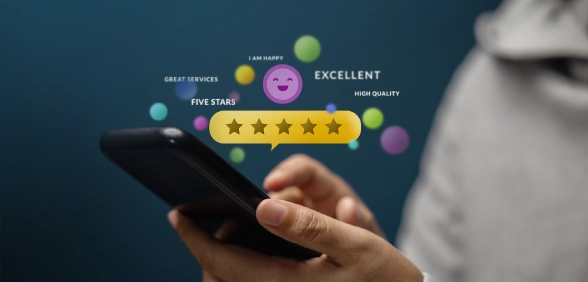Improving Customer Experience (CX) is essential for businesses to succeed in today’s competitive market.
Nowadays, many businesses are focusing on popular technologies to enhance the digital customer experience. With top e-commerce players utilizing these tools to assist with customer journey mapping.
We understand the stress of making informed tech-related decisions. But we also know the importance of extracting insights from data drives business growth. Which is why we’re sharing our top 5 technologies currently making waves in the Customer Experience world.
Excited to learn more? Let’s dive in!
1. Online E-Commerce Platforms
In today’s world, the online channel has become a crucial aspect of business survival. With the pandemic altering the way we interact and conduct business, customers now rely on businesses’ websites to purchase goods or services easily.
According to the Statista Market Forecast, the e-commerce market will continue to grow in the next five years. In Australia, the e-commerce market is projected to reach U.S. $31.3B in 2021, with over 20.7m online shoppers expected by 2025.
The user penetration rate is expected to be 75.4% in 2021, and projections show that it will increase to 77.1% by 2025. The average revenue per user (ARPU) is estimated to be US$1.6B. Additionally, it is expected that 90% of total e-commerce purchases in Australia in 2021 will be domestic.
As a result, the rise of e-commerce and digital sales channels has created a new hyper-competitive arena. Customers find it easier to close a website page than to walk out of a physical store, making it challenging to know why they left. Businesses must not overlook customer service team challenges, such as pre-sale decision-making or post-sale dispute resolution. Designing a great customer online shopping experience is crucial to success.
Tip 1: Build a robust online shopping experience. It will create significant opportunities for growth.
2. Chatbots and AI
Are you worried about the cost of building a customer support team? Not to fret, chatbots will come to the rescue! Many online shoppers need support when browsing a product page. Therefore, they may be hesitant to make a purchase.
Certainly a simple chatbot with some common questions and answers can help improve Customer Experience.
Firstly, designing a chatbot can be tricky. You may want to have a chatbot answer simple, frequently asked questions, reducing the burden on support. Secondly, your support can handle the more complex questions.
The chatbot flow, questions and answers should fit your customers’ needs. It acts as a screening process to categorise the customer’s questions.
Linchpin’s report has some interesting stats on the trend of using chatbots. Having an effective chatbot will benefit your business and improve Customer Experience at a low cost.
- 47% of organisations expect to implement chatbots for customer support services.
- 40% are expected to adopt virtual assistants.
Consumer-based service predictions suggest that chatbots will be programmed to match human behaviour, offer similar services, and improve customer service.
Tip 2:
- Create a chatbot for your online business.
- Periodically review the questions that require human support.
- Then update your chatbot accordingly.
To sum up, this approach will support better Customer Experience.
3. Augmented / Virtual Reality
These technologies may sound quite far away from the business world, but they have already reshaped Customer Experience.
Take the Real Estate industry. Imagine this. You can sit in your home, wearing a headset and take a tour to your dream house. How about decorating your home with some virtual furniture by some drag and drop? Ikea offers this with their AR app IKEA Place where you can place their furniture digitally in your room.
Furthermore, Apple is investing heavily in AR In recent years Apple has made its devices better equipped for placing virtual models in space. Developers are adopting this technology in novel ways and AR could be a key future direction for Apple.
With AR, you could try some new season dresses without going to the store. It is expected to transform shopping experiences.
AR/VR are powerful technologies that will create breathtaking Customer Experiences and provide new flexible customer journeys.
Most importantly, Customer Experience professionals may start using AR/VR to run A/B tests to find winning customer journeys or build physical Customer Experiences.
The report (Virtual reality (VR) – statistics & facts | Statista) shows that the market size of VR is going to double in the next three years.
VR aims to create a sensory experience for the user, sometimes including sight, touch, hearing, smell, or taste. The industry is growing fast, with the global V.R. market size projected to increase from less than US$5B in 2021 to more than US$12B by 2024.
In short, VR could help enhance user experience, creating a new way to win customers.
Tip 3: Keep an eye on the AR/VR trends. Customers love visual journeys potentially more than looking at web pages. It can enhance customer engagement, and the flexibility allows more innovative ideas to pop up.
4. Internet of Things (IoT)
The Internet of Things (IoT) is a network of physical objects that can communicate with each other over the internet. This innovative technology has revolutionized data collection and has enabled businesses to provide a better customer experience.
A practical example of the IoT in action is the use of smart home heating and air conditioning systems. These devices can monitor the home environment and adjust the room temperature to a comfortable range while reducing energy consumption. By connecting to the internet, these devices can upgrade their software to provide greater value to customers over time.
One significant benefit of the IoT is the creation of a human-machine interface that allows customers to access information and services easily. By offering an app with a product, businesses can encourage customers to use it more, which can lead to repeat business and increased customer loyalty.
In summary, the IoT has become a powerful tool for gathering data and providing a better customer experience. By embracing this innovative technology, businesses can upgrade their products’ software, provide greater long-term value to their customers, and ultimately drive repeat business.
Tip 4: To sum up, when adding IoT to your product, pay attention to security and software maintenance. Customers have greater demands for IoT devices, and to win the market, your products must have high quality, good support, and a high level of security.
5. Voice of Customer Programs
To create a great Customer Experience, you need to know how to measure it. Without seeking feedback from customers, you will have difficulty creating revenue-generating experiences.
You might be familiar with some popular CX metrics like NPS and CSAT (if not, please check out – Different types of NPS – why and when to use them for a detailed explanation). In short, these metrics tell you if customers are satisfied with the experience your business offers.
Why does this matter? First of all, you don’t want an angry customer to complain on social media before coming to your customer relationship management team. We all know how much damage a Tweet or a 1-star Google review can cause to a business.
Secondly, you need to know what works well and what doesn’t. For example, 70% of customers may be happy with your product quality, and 30% think the delivery speed is acceptable. If you don’t have this data, how would you know what your business should prioritise?
How would you know whether to put more resources into quality assurance, customer service or delivery management if you don’t know your customers?
Tip 5: If you haven’t started to gather feedback from your customers, you should start thinking about launching a feedback program. Above all, the power of data and insights will drive a better Customer Experience.
Summary and how to improve Customer Experience
To sum up article has talked about the Top 5 technologies that help improve Customer Experience. Let’s do a quick recap.
- E-Commerce will grow in the next decade, and every business should consider the online sales channel a crucial strategic area.
- With more online shoppers and orders, your customer service resources might face shortages. Therefore chatbots can help with common questions create a pre-filtering process. A chatbot can reduce costs for your business and help you scale.
- AR/VR is a great tool to create innovative Customer Experiences. You can try different ideas with target groups and quickly roll them out to your customers without less time and location constraints.
- IoT devices can increase your product value because they can talk over the internet, gather/access data, and update themselves whenever necessary. These strengths of IoT devices make for great Customer Experience. IoT can set your product apart from regular products in a competitive market.
- Finally, never guess your customer’s sentiment through gut feelings. The Voice of Customer programs gather data from real customers and can provide great insight for the business. VoC offers industry-standard measurements to understand where your current Customer Experience stands.
A VoC program will help with your strategic decisions. In other words, it can compare past and current data and help you know whether you are on the right track. Further, you will stay ahead of the game through customer feedback insights, identify problems, and beat the competition.
To understand more about VoC programs, contact Resonate to request a demo and learn more about it!






